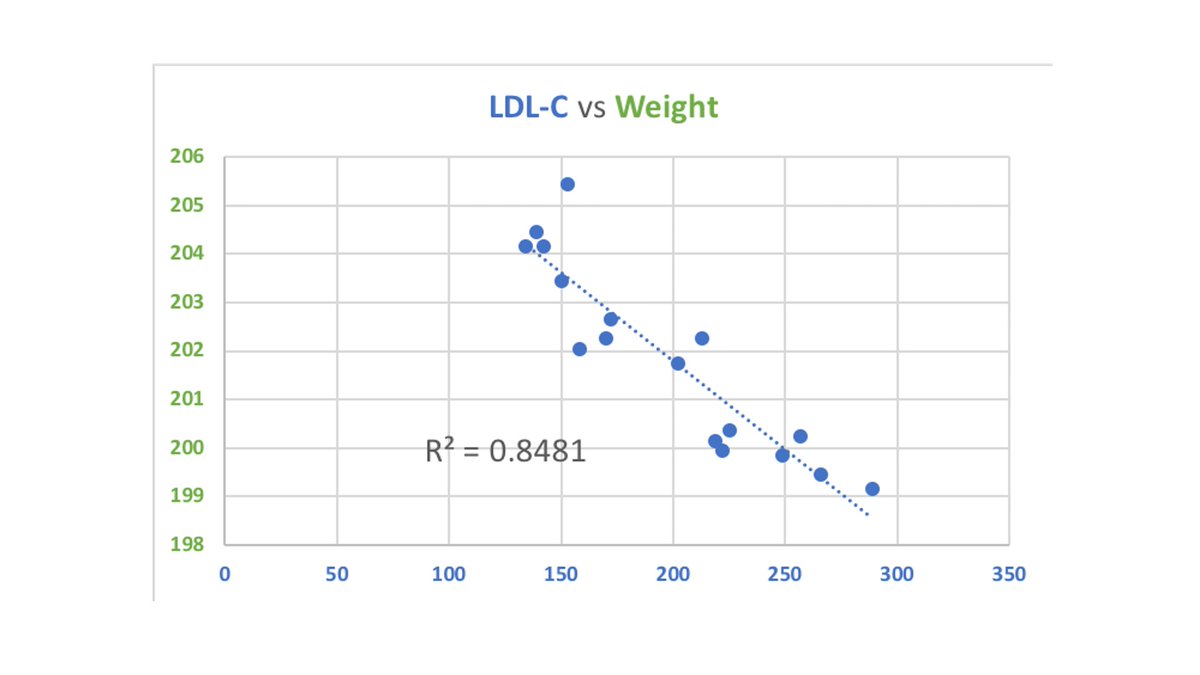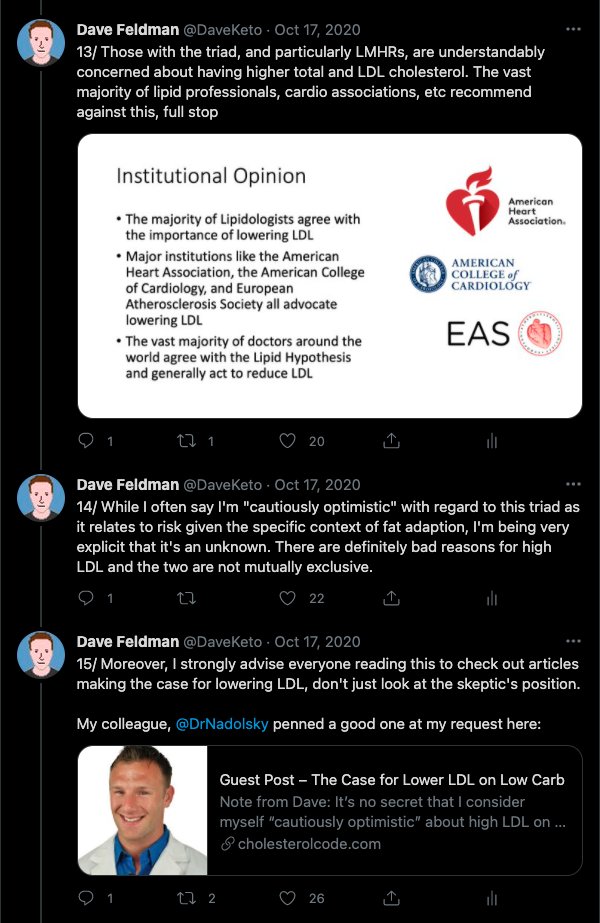
1/ Yes, my answer to the poll by @nicknorwitz was "Gain 4% body fat". And honestly, it was a pretty easy one when compared to the others.
But to be fair, I also have quite a bit of direct data on this in particular... let's unpack...
But to be fair, I also have quite a bit of direct data on this in particular... let's unpack...

2/ First, if you didn't already know this about me, in 2018 I literally gained almost 20lbs of fat for the Weight Gain Experiment. cholesterolcode.com/weight-gain-ex…
(As an aside, I realize now I did presentations on the findings for this experiment, but didn't do a write up. Bad Dave!)
(As an aside, I realize now I did presentations on the findings for this experiment, but didn't do a write up. Bad Dave!)
3/ But spoiler alert -- my total and LDL cholesterol did indeed go down where having gained weight and back up where having lost it.
To be sure, I think there are thresholds to "active fat gain/loss" vs standing, stable fat mass, but we'll save that for another thread.
To be sure, I think there are thresholds to "active fat gain/loss" vs standing, stable fat mass, but we'll save that for another thread.

5/ Okay, so let's backtrack to the other answers. Do I think the other three *also* impact LDL-C? Yes, just much more marginally given the quantities listed.
That said, I lately consider fiber to be of more interest than I did before for multiple reasons...
That said, I lately consider fiber to be of more interest than I did before for multiple reasons...
6/ I've done a bit more post hoc on some of my other data when I was more commonly consuming a homemade pizza I used to make with psyllium husk as part of the crust ingredients. I think I had a marginally lower LDL with it in my diet, all else equal-ish.
https://twitter.com/DaveKeto/status/984439954666237953?s=20
7/ Another set of data points on this originates from @ScepticalDoctor's N=1s with #PlantBased low carb (but not quite keto). Where again we see low LDL, but this could be confounded by true carb levels vs assumed net-out. Ideally, we'd have CGMs involved to confirm glucose intro
8/ Anyway, I just bring this up in regards to the 4% fat vs 20g fiber per Nick's poll answers -- as it might well be that enough fiber could overtake the contribution fo fat %.
Hence, my renewed interest in doing a fiber-only intervention experiment soon #ForScience!
Hence, my renewed interest in doing a fiber-only intervention experiment soon #ForScience!
• • •
Missing some Tweet in this thread? You can try to
force a refresh







